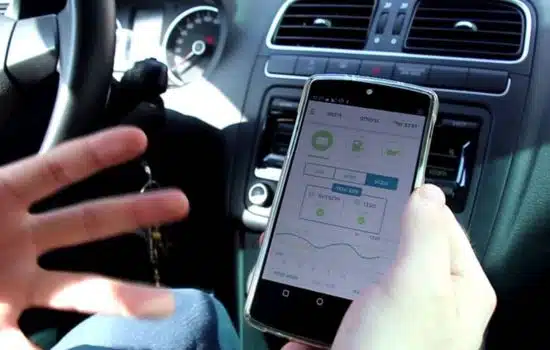Advertisements
Losing photos is a situation that can affect anyone, regardless of whether you are a photography enthusiast or simply save images to remember special moments.
In the heat of everyday life, a misclick or a system glitch can make those memories disappear in an instant.
Advertisements
However, modern technology has responded to this problem with applications specialized in recovering deleted photos.
This article not only details the functions and features of the main tools available, but also collects testimonies and experiences of users who have managed to recover their precious images.
Advertisements
In this walkthrough, we will explore three prominent apps for photo recovery: DiskDigger, PhotoRec and EaseUS MobiSaver.
See Also
- How to legally live in another country: a complete guide
- Connect Anywhere with Free Wi-Fi Networks
- The Best App to Have 5G on Your Cell Phone
- Offline Music Lovers
- The new social network that is conquering the United States
Although we will discuss these three options again, in this article we take a different approach, combining technical analysis with user stories and success stories.
The aim is to offer you a complete overview so that you can choose the tool that best suits your situation and level of knowledge.
1. DiskDigger: Hope for Panicked Users
Getting to know DiskDigger
DiskDigger has been one of the first choices in many users' minds for years when it comes to recovering deleted files. Its design focused on simplicity and speed has allowed it to gain the trust of both novice and more experienced users. The application stands out for offering two scanning modes: a quick one, ideal for the immediate recovery of recently deleted files, and a deep one, which thoroughly analyzes the device's memory to find files that have been marked as deleted.
User Experiences
Maria, a mother of two, tells us:
“One day, while cleaning up my phone, I accidentally deleted a family photo album. I was devastated, but a friend recommended DiskDigger to me. I logged into the app, performed the deep scan, and to my surprise, within an hour I could see my photos listed as recoverable. Although I had to pay for some advanced features, the investment was worth it because I recovered irreplaceable memories.”
This testimonial highlights the ease of use and effectiveness in panic situations, where the priority is to quickly recover images that seem to have been lost forever.
Technical Analysis
Technically, DiskDigger uses search algorithms that identify “digital signatures” of files, allowing it to reconstruct images that appear to have been deleted. This method is especially useful for Android devices, although there are limited versions for other operating systems.
Its technical advantages include:
- Two-Phase Scanning: It allows for rapid recovery in emergency situations and in-depth analysis when greater comprehensiveness is required.
- Friendly Graphical Interface: Its design makes navigation easy, allowing users to preview images and select which ones they want to retrieve.
- Multilingual Support: The app is available in multiple languages, making it easy to use across countries and regions.
Advantages
- Quick identification of deleted files.
- Intuitive interface, ideal for non-technical users.
- Two scanning modes to suit different situations.
2. PhotoRec: The robust option for technical users
An Open Source Tool
PhotoRec is renowned in the data recovery field for its robustness and versatility. Being an open source software, it has been continuously improved by a global community of developers and technical users. This allows it to adapt to a wide variety of systems and file types, not just limited to images.
PhotoRec works by detecting specific “signatures” of each file type, allowing it to recover images, documents, videos and other data that have been deleted from the system.
Experiences and Opinions of Experts
Jorge, a professional photographer, shares his experience:
“On one occasion, I had a critical failure on my computer and lost several photo sessions in RAW format. I tried PhotoRec after reading recommendations on a specialized forum and, although the interface is not as user-friendly as other applications, the result was impressive. It managed to recover almost all the images and I was able to continue with my work without any major setbacks. Without a doubt, it is an indispensable tool for those of us who handle large volumes of data.”
Jorge's experience highlights PhotoRec's ability to handle complex formats and recover data in situations where other programs may fail.
Detailed Analysis
From a technical perspective, PhotoRec stands out for:
- Multiplatform: Compatible with Windows, macOS, Linux, and even some Android versions, making it a versatile option for different environments.
- Multi-format Recovery: It is not limited to just images; its algorithm allows it to recover a variety of formats, ideal for users who handle different types of files.
- Advanced Settings: Although it may be intimidating for inexperienced users, the ability to adjust specific parameters allows you to optimize recovery based on the particular needs of your device.
Pros
- Very high success rate in recovering files of various formats.
- Open source, which facilitates continuous updates and improvements.
- It works across multiple platforms, providing flexibility for technical users.
3. EaseUS MobiSaver: The comprehensive solution for the modern user
An App Designed for Everyone
EaseUS MobiSaver has quickly gained popularity thanks to its comprehensive approach and easy handling. Designed for both Android and iOS users, this app has been praised for its ability to recover photos, messages, and other important files with ease.
What makes EaseUS MobiSaver stand out is its guided process, which accompanies the user step by step during the recovery, minimizing the possibility of errors and maximizing the efficiency of the process.
Recovery Stories
Ana, a university student, recounts her experience:
“I remember I was about to submit an important presentation when I accidentally deleted a set of images I had been preparing for weeks. I was desperate, but after reading some reviews online, I decided to give EaseUS MobiSaver a try. The app guided me through every step, and in less than 30 minutes, I managed to recover all my images. It was like I had gotten back not only the photos, but my peace of mind and confidence.”
Ana's story is a clear example of how an intuitive interface and a well-structured process can make a difference at critical moments.
Key Features
EaseUS MobiSaver is distinguished by:
- Interactive Assistant: Each step of the process is clearly indicated, allowing even less experienced users to follow the instructions without difficulty.
- Custom Selection: Lets you choose to recover photos, videos, messages, and other types of data, offering flexibility depending on what was lost.
- Resource Optimization: Designed to work efficiently on resource-constrained devices, ensuring fast recovery without overloading the system.
Technical Evaluation
From a technical point of view, EaseUS MobiSaver incorporates:
- Differential Scanning: It offers different scanning modes to suit both quick recoveries and more in-depth processes, which is essential in situations where data loss is extensive.
- Wide Compatibility: It supports modern devices and older versions of operating systems, making it accessible to a wide range of users.
- Recovery Safety: By avoiding overwriting the source memory during the process, the application protects the remaining data and maximizes the chance of a successful recovery.
Benefits
- Guided and easy-to-understand process for users without advanced technical knowledge.
- High success rate in recovering photos and other media files.
- Compatible with multiple operating systems, offering versatility in use.
Success Stories and Comparative Testimonials
To further illustrate the effectiveness of these applications, here is a comparison based on real testimonials:
- Comparative Testimony:
- Juan, professional photographer:
“I used PhotoRec after losing RAW files on a shoot. The learning curve was challenging, but the result was amazing. I got almost all of my images back, which saved me an entire photo shoot.” - Laura, average user:
“When I accidentally deleted my vacation album, I turned to EaseUS MobiSaver. The step-by-step guide helped me get everything back without any hassle. It is definitely the most user-friendly tool for non-techies.”
- Juan, professional photographer:
- Speed and Ease Comparison:
- DiskDigger It excels in time-critical situations, offering fast recovery, especially when files have been recently deleted.
- PhotoRec excels at recovering a wide variety of formats and in environments where deep analysis is required, although it may require more time and technical knowledge.
- EaseUS MobiSaver It balances speed and ease of use, making it ideal for those who need an immediate solution without technical complications.
Strategies and Tips to Maximize Recovery
In addition to choosing the right app, it is vital to follow certain strategies that can significantly increase the chances of success:
- Act Immediately:
As soon as you notice data loss, avoid using the device to prevent new files from overwriting the deleted data. Each operation on the memory can decrease the chance of a complete recovery. - Make Regular Backups:
Prevention is always the best option. Scheduling regular backups, either to the cloud or to external devices, ensures that your photos and other data are protected in case of an emergency. - Update Your Apps and Operating Systems:
Updates not only add new features but also optimize the compatibility and security of the recovery. Make sure to keep both the operating system and recovery applications up to date. - Read the Documentation and Opinions:
Before choosing an app, research reviews and official documentation. Knowing other users' experiences will help you determine which tool is best suited for your particular situation. - Use the Appropriate Scan Mode:
Many of these apps offer different scanning modes. If the loss was recent, a quick scan may be sufficient. In cases of prolonged deletion or when the device has suffered multiple writes, a deep scan is the best option. - Follow the instructions of the Recovery Wizard:
Tools like EaseUS MobiSaver feature interactive wizards that guide you step by step. Following these directions can make the difference between a successful recovery and an incomplete one.
Summary and Recommendations
Finally, it is important to summarize the main recommendations drawn from this analysis:
- For users who are in panic and need immediate recovery:
DiskDigger is the ideal application thanks to its fast scanning mode and simple interface. - For technical or professional users who require a robust and versatile solution:
PhotoRec is the best option, despite its less user-friendly interface, as it offers a high recovery rate for multiple formats. - For the average user who values ease of use and step-by-step guidance:
EaseUS MobiSaver turns out to be the one-stop solution, balancing speed and efficiency without any hassle.
At the end of the day, choosing the right tool will depend on your particular needs and the context you find yourself in. Always remember to act quickly and, above all, maintain a constant backup strategy to avoid future inconveniences.

General Conclusion
In an increasingly digital world, our memories are just a few clicks away, but they also risk being lost in the blink of an eye.
Photo recovery apps have evolved to give us a second chance, giving us back pictures we thought were lost forever.
With DiskDigger, PhotoRec and EaseUS MobiSaver, we have powerful tools, each with their own strengths, that can adapt to different scenarios and experience levels.
The central message is clear: don't despair over the loss of images.
With the right tools and a proactive attitude, it is possible to recover those moments that we value so much.
So, if you ever find yourself in the unfortunate situation of losing important photos, remember that there are solutions within reach. Do your research, choose the app that best suits your needs, and act quickly.




